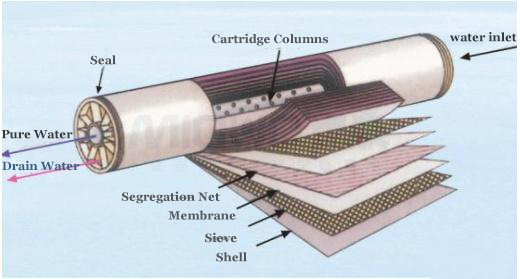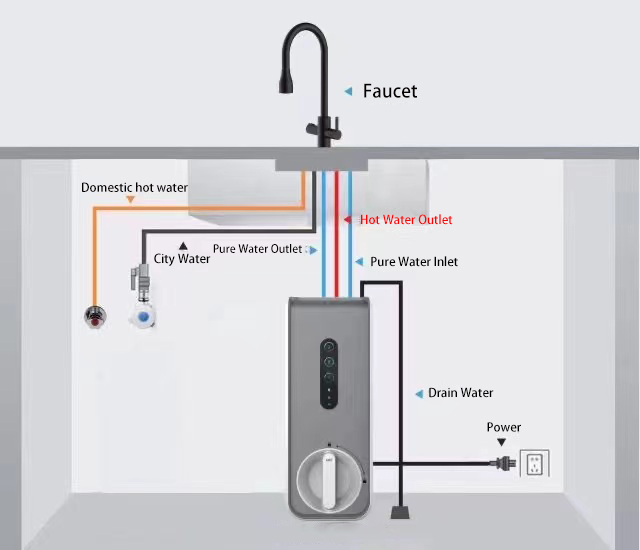Firstly, before understanding water purifiers, we need to grasp some terms or phenomena:
① RO membrane: RO stands for Reverse Osmosis. By applying pressure to the water, it separates tiny and harmful substances from it. These harmful substances include viruses, bacteria, heavy metals, residual chlorine, chlorides, etc.
② Why do we boil water habitually: Boiling water can remove residual chlorine and chlorides in purified water from water treatment plants, and it can also act as a sterilization method against microorganisms.
③ Rated water production: The rated water production indicates the amount of water filtered before the filter cartridge needs to be replaced. If the rated water production is too low, the filter cartridge needs to be replaced frequently.
④ Waste water ratio: The ratio of the volume of pure water produced by the water purifier to the volume of waste water discharged within a unit of time.
⑤ Water flow rate: During use, the purified water flows at a fixed rate for a specific period. An 800G water purifier produces approximately 2 liters of water per minute0.
Currently, the principles of water purifiers on the market are mainly based on “adsorption and interception,” which are mainly divided into two types: ultrafiltration and reverse osmosis.
The main difference between these two mainstream water purifiers lies in the filtration accuracy of the membrane.
The filtration accuracy of the RO membrane water purifier is 0.0001 micrometers, which can filter out almost all the impurities mentioned earlier. The water from the RO membrane water purifier can be directly consumed. However, it requires electricity, produces waste water, and has a higher cost.
The filtration accuracy of the ultrafiltration water purifier membrane is 0.01 micrometers, which can filter out most impurities and bacteria but cannot eliminate heavy metals and scale. This type of purifier does not require electricity, does not have separate waste water discharge, and is inexpensive. However, after filtration, metal ions (such as magnesium) remain, resulting in scale, and other small impurities are also retained.
Post time: Apr-29-2024


